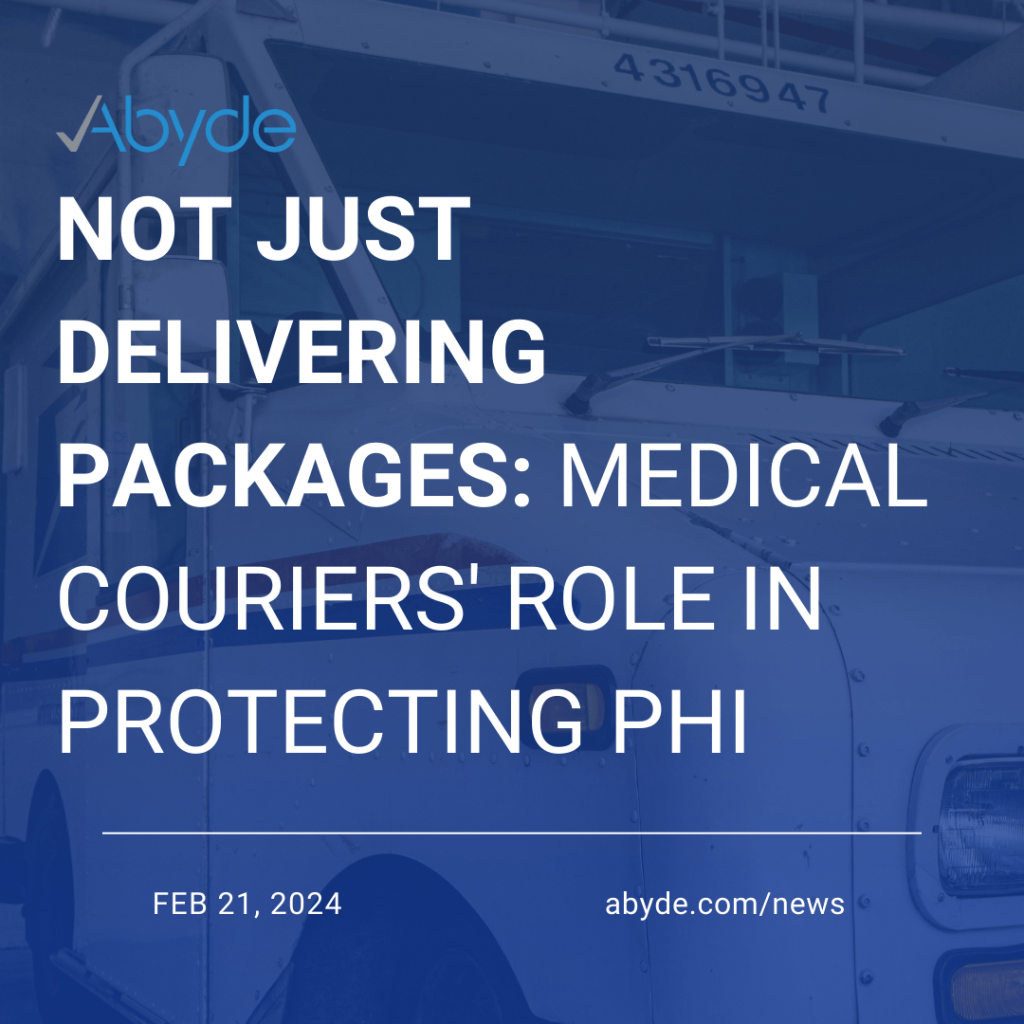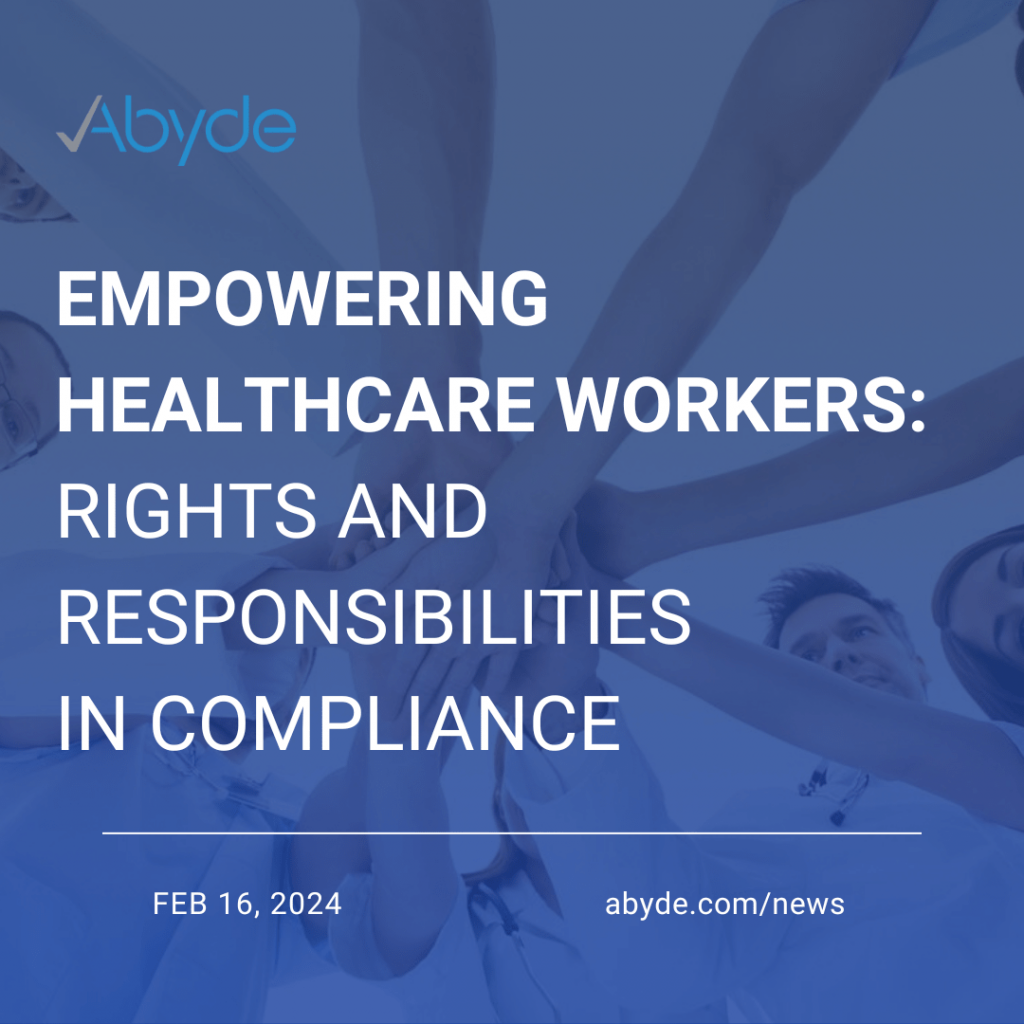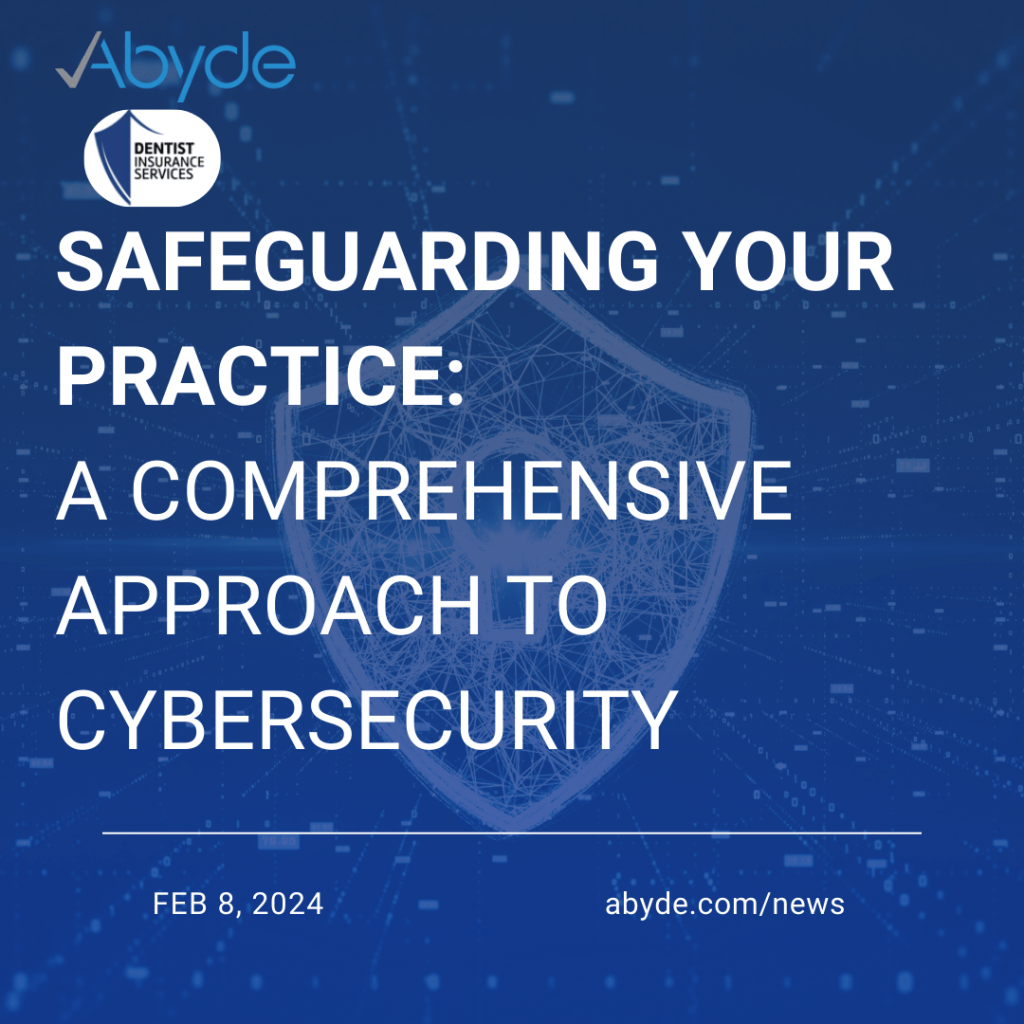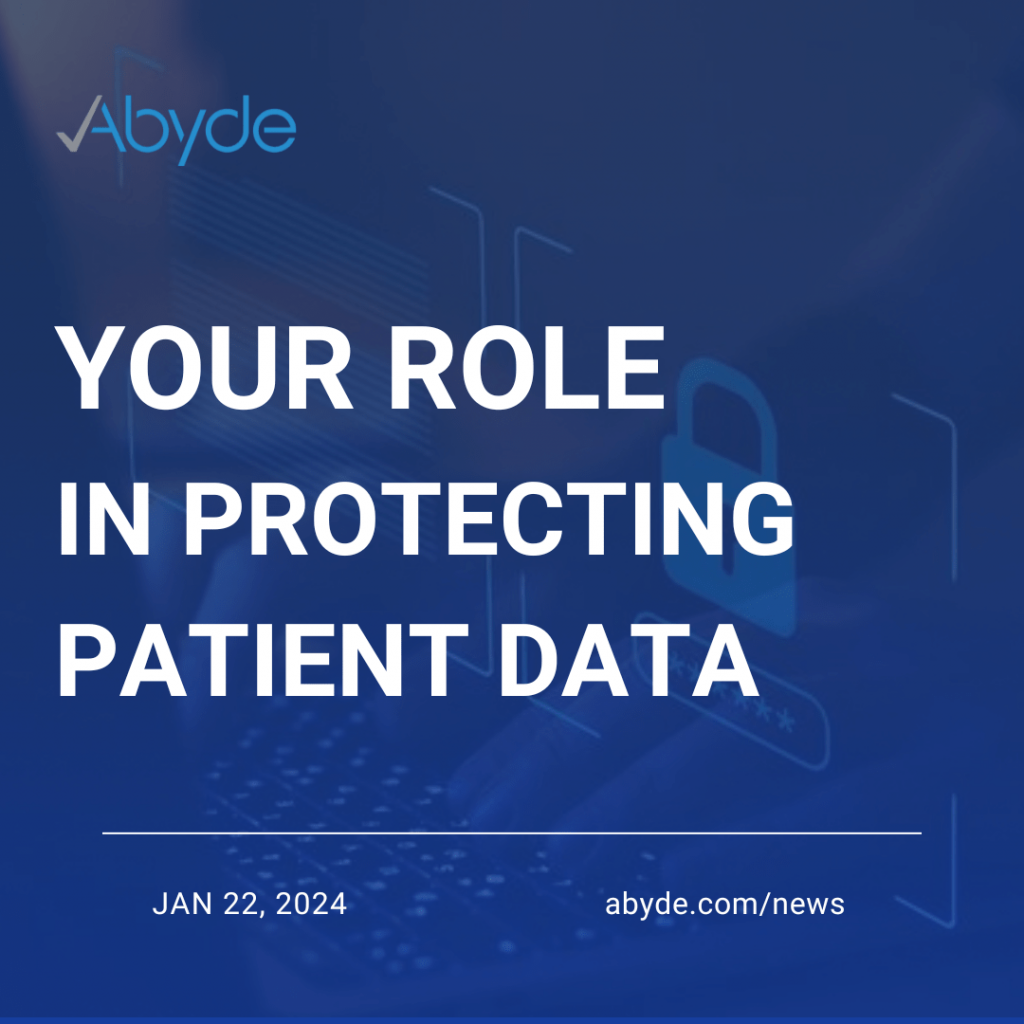February 29, 2024 Happy Leap Day! With the extra 24 hours, what do you plan to do? First, if you haven’t, remember to report your small breaches to the OCR today, but what else? I know you might say do nothing and sit on the couch later, and while that sounds great, we have some better ideas for you. We at Abyde believe in self-improvement and betterment, appreciating every day and making an impact. This once-in-every-four-year occasion is an opportunity to do something new and start a task you’ve been putting off. For many, this could be compliance. Compliance software is key, knowing your practice is prepared if used correctly. Investing in compliance software is a small cost compared to how expensive violations can be, with the smallest HIPAA fines costing $137 and the least expensive OSHA fines costing $1190. While perfect compliance can’t be achieved in one day (if it could, we wouldn’t be here!), by taking the first step today and using Abyde’s software, compliance is easily within your reach, with us simplifying the process and being with you every step of the way. Compliance is a continuous process, but it requires the first step to build that culture of compliance for your practice or organization. A culture of compliance takes time, training your staff, having all understand the importance of compliance, the precautionary measures that need to be taken to secure Protected Health Information (PHI), and ensuring a safe working environment for all. We at Abyde know how precious your time is, so we offer quick 15 to 20-minute demos and consultations. Additionally, Abyde prides itself on how we make the compliance process efficient and fun. Complete the once daunting Security Risk Analysis, or SRA, in minutes with our intuitive and simple questions. Drastically cut down on time with our dynamically generated Policies & Procedures, having custom documentation created for you in seconds. Learn from our numerous resources in the software on what it means to be compliant. If you have any questions, experience white-glove service from our team of compliance experts, only a short call or message away. While an extra day might feel insignificant, all it takes is that first step on the journey to compliance. We hope you enjoy your extra day, and make that first step by scheduling a short demo or consultation (Business Associates, click here, please!) with our experts today. If you still have questions, email us at info@abyde.com, or call 1.800.594.0883.
Keeping Your Team Safe: A Guide to the OSHA Form 300A for Healthcare Facilities
February 27, 2024 Hi! Your friends here at Abyde just wanted to remind you that the OSHA Form 300A deadline is quickly approaching. The due date for reporting this is March 2nd, 2024. While reporting this vital information might not be the most exciting thing to do with your time, we’re here to make it easy. What is the OSHA Form 300A? The OSHA Form 300A is the yearly report of the injuries and illnesses from the previous year. For most, the Form 300A is the only OSHA form required to be submitted by this due date. This form does not include any personal information from the incidents, just an overall year summary. This document is a crucial tool for organizations to keep their employees safe, documenting safety hazards and preventing future accidents. Is there a more detailed form? Why yes, there is! The OSHA Form 300 is an expanded version of the OSHA Form 300A. The OSHA Form 300 includes personal information, the number of days out, what happened, and more. The OSHA Form 301 has even more specific questions on what happened and the steps taken, including the physician who treated the employee. Both the OSHA Form 300 and 301 have to be updated within 7 days of an incident. These more detailed forms also have to be submitted if you work for a major practice of more than 250 employees or over 100, if you work in a high-hazard industry. Also, OSHA Form 300, 300A, and 301 need to be stored for at least 5 years. How can I fill out the OSHA Form 300A? Well, we are one step ahead of you. With Abyde’s revolutionary OSHA software, log the incident by clicking the Safety & Health Logs section in your dashboard. Once clicking that, choose the type of incident (we require a little more information if it’s a sharps injury), and fill out the required information. Our software log questions model the Form 300 document, so, at the end of the year, you can download a dynamically generated Form 300A, saving the work for you. How do I report this to OSHA? The process is easy. You can report your OSHA 300A form online here. With the Abyde software, we have the OSHA Form 300A completed for you, you can breeze through this requirement, by just putting it into the online form. OSHA also created a video tutorial. How can Abyde help? As you can see, Abyde dramatically simplifies the reporting process, creating a 300A form for you. Just make sure you properly log any workplace injuries or illnesses in the software! While Abyde can’t directly submit the form for your practice, we are more than happy to help you if you have any questions. Current Abyde users can call us at 1.800.594.0883 or chat in our live support option in the software and we will be more than happy to help! To learn more about simplifying OSHA for your practice, send us an email at info@abyde.com or schedule a compliance consultation here.
Not Just Delivering Packages: Medical Couriers’ Role in Protecting PHI
February 21, 2024 While doctors, nurses, and researchers often take center stage in healthcare, there’s another critical group working tirelessly behind the scenes: medical couriers. These are the logistics ninjas, the delivery defenders, who ensure vital medical supplies, specimens, and documents reach the right place at the right time. Medical couriers go far beyond simply transporting packages. They handle protected health information (PHI) in various forms, making them subject to HIPAA compliance alongside healthcare providers and health plans. This means they share the responsibility of safeguarding patient privacy and security. Key Responsibilities in Compliance: HIPAA Compliance: A Shared Responsibility Healthcare providers rely on Business Associate Agreements (BAAs) to establish clear expectations and obligations for couriers regarding HIPAA compliance. These agreements outline: The Impact of Compliance: Effective HIPAA compliance by medical couriers benefits everyone: The Future of Couriers and Compliance The future of medical courier services might involve drones and autonomous vehicles for faster deliveries. However, the core responsibilities – data security, adherence to regulations, and understanding the impact on patient privacy – will remain central to their role as HIPAA business associates. Medical couriers are no longer just delivery personnel; they are crucial partners in ensuring healthcare compliance and safeguarding patient privacy. By understanding their critical role and responsibilities, we can appreciate their impact on a healthier and more secure healthcare system. For medical couriers and Business Associates in general, Abyde is your compliance solution. With our newest software, HIPAA for Business Associates, BAs can manage compliance with ease. HIPAA for BAs includes a robust security risk analysis, training for BAs, automated policies and procedures, dynamically generated Business Associate Agreements for Covered Entities and Sub-Business Associates, and much more. To learn more, email hipaa-ba@abyde.com and schedule an educational consultation here.
Empowering Healthcare Workers: Rights and Responsibilities in Compliance
February 16, 2024 The foundation of a strong healthcare practice lies in empowered healthcare workers. These individuals, from doctors and nurses to technicians and therapists, stand on the frontlines, safeguarding our health and well-being. However, with all the demands and complexities of their roles, it’s crucial to remember they have both rights and responsibilities. Read more to see how to empower healthcare workers and the positive benefits of a comprehensive compliance program in your practice. Understanding Worker Rights: Empowerment in Compliance Having a comprehensive compliance program is another way you can empower your team. Abyde can be your solution for this. Our software simplifies compliance and empowers healthcare professionals, allowing them to navigate compliance with ease. Our software includes entertaining training, intuitive security risk assessments, dynamically generated policies, and more. Our simplicity is our strength, empowering Abyde users to know their rights and responsibilities in compliance. To learn more about empowering your practice email info@abyde.com and schedule a demo today.
Social Media & HIPAA: Compliant Social Media Tips for Your Practice
February 15, 2024 Picture this: you’re a doctor, feeling proud after helping a patient overcome a challenge. You snap a selfie with them, post it on your clinic’s Instagram, and bam! Instant HIPAA violation. We’ve seen how social media is about more than just staying connected with friends and family. It’s become a powerful tool for reaching new audiences and having meaningful interactions with other users. If used correctly, social media can be an awesome tool to educate and share the resources your practice provides easily to patients. However, it is important to use social media wisely and know how crucial it is to protect patient information. Social media can be a slippery slope to HIPAA violations if misused. That’s why we’re here today to share with you the best tips and practices for your social media. The Less Information, The Better Double Check Before Posting Have Media Consent Forms Signed While your journey to be famous online might not be as easy as cute cat videos, by prioritizing HIPAA compliance on social media, you can confidently utilize technology to engage with audiences without compromising their privacy. Social media can be complicated, but compliance doesn’t have to be with Abyde. Abyde offers a thorough security risk analysis that dives into not only social media use but all facets of your practice. Abyde also has interactive training, policies and procedures, forms, and more, for your practice to utilize. To learn more about simplifying compliance for your practice, email us at info@abyde.com and schedule a demo here.
Safeguarding Your Practice: A Comprehensive Approach to Cybersecurity
February 12, 2024 The following blog was co-written with Abyde’s partner, Carrie Millar at Dentist Insurance Services. If you would like more information on Dental Insurance Services, please click here to visit their website. In an era where technology plays a pivotal role in healthcare practices, ensuring the security of sensitive patient information is paramount. Cybersecurity threats pose a significant risk to medical practices, and adopting a multi-faceted approach is crucial to safeguard against potential breaches. This article explores the three key components to cyber safeguarding your practice: Strong IT for prevention, a Formal HIPAA compliance program, and Cyber Liability Insurance. 1. Strong IT for Prevention The foundation of any robust cybersecurity strategy is a well-built IT infrastructure. Prevention is the first line of defense against cyber threats. Implementing strong IT measures involves securing networks, regularly updating software and systems, and employing robust firewalls and antivirus solutions. Encryption of sensitive data both in transit and at rest adds an extra layer of protection. Regularly monitoring network activity and promptly addressing any anomalies can help identify potential security breaches early on. Employee training on cybersecurity best practices is equally essential, as human error remains a significant factor in cyber incidents. By investing in strong IT measures, practices can significantly reduce the risk of unauthorized access and data breaches. 2. A Formal HIPAA Compliance Program Compliance with the Health Insurance Portability and Accountability Act (HIPAA) is mandatory for healthcare providers, and it forms a critical aspect of cybersecurity. HIPAA compliance programs, such as Abyde (www.abyde.com), provide a structured framework for ensuring that your practice adheres to the stringent regulations in place. These programs offer comprehensive training for employees, covering topics such as data handling, password management, and recognizing potential phishing attempts. Regular audits and assessments help identify areas of improvement and ensure ongoing compliance. By instilling a culture of compliance within your practice, you not only protect patient information but also mitigate the risk of legal consequences associated with HIPAA violations. 3. Cyber Liability Insurance While prevention and compliance measures significantly reduce the likelihood of a cyber incident, it is crucial to acknowledge that no system is entirely impervious to attacks. Cyber Liability Insurance acts as a safety net in the event of a security breach, providing financial assistance to cover the costs associated with the aftermath. Make sure your comprehensive cyber liability insurance policy includes business income coverage, forensic investigation costs, public relations costs, as well as third-party liability. A great example of this is the Coalition Insurance policy sold by insurance broker Healthcare Professional Insurance Services (www.joinhpis.com) The average cost of a cyber-attack has surged in recent years to almost $400,000 per location and an average of 9 closed business days, making Cyber Liability Insurance an indispensable component of a comprehensive cybersecurity strategy. Having this safety net allows practices to recover more swiftly and continue providing uninterrupted services to patients.
Building a Culture of Compliance: How to Get Your Employees Onboard Across Multiple Locations
February 1, 2024 For multi-location practices, handling protected health information (PHI) means getting every employee, across several locations, on board with understanding and upholding HIPAA rules. But how do you create a culture of compliance that goes beyond location and simply ticking boxes? Fear not! Abyde is here to help you simplify compliance. The Importance of a Proactive Approach: Compliance shouldn’t be a reactive measure implemented solely to avoid penalties. Instead, cultivate a proactive environment where employees understand the “why” behind HIPAA regulations and their role in protecting patient privacy. This fosters a sense of shared responsibility and empowers employees to make informed decisions regarding location data usage. Implementing a Culture of Compliance: Remember: Building a culture of compliance is an ongoing process. By prioritizing education, open communication, and employee empowerment, you can create a work environment where HIPAA compliance is not just a requirement, but a shared responsibility among all. Here at Abyde, we want to assist and supplement your culture of compliance, offering intuitive software that streamlines the compliance process. Our enjoyable trainings, customized agreements, and detailed, yet simple security risk analysis will help your practice, across all locations, make sure you’re on the right track. To learn more about compliance for your enterprise organization, email info@abyde.com and schedule a demo today!
Your Role in Protecting Patient Data
January 22, 2024 In the intricate healthcare ecosystem, patient data flows through a network of entities, each holding a piece of the puzzle. At the core are covered entities, like hospitals, clinics, and health plans, directly responsible for patient care and managing their Protected Health Information (PHI). Alongside them stand business associates, vendors and service providers who handle PHI on their behalf, performing crucial tasks like billing, claims processing, and data analytics. Both covered entities and business associates share a critical responsibility: safeguarding patient data with utmost vigilance. Breaches or misuse of this sensitive information can have severe consequences, eroding trust, damaging reputations, and potentially harming patients. So what exactly constitutes your role in this collective effort, depending on your position within the system? Unpacking the Roles: Sharing the Responsibility: Some vital roles Covered Entities and Business Associates play in data security include: Shared Accountability, Shared Success: Protecting patient data is a team effort. Covered entities and business associates must work together, hand-in-hand, to build a robust security ecosystem. This requires: Compliance is not just a box to tick; it’s a shared commitment to safeguard patient trust and privacy. By understanding their roles and responsibilities, both covered entities and business associates can lead as protectors of patients’ sensitive information. For more information on how you can ensure compliance, contact us at info@abyde.com and schedule an educational consultation here.
From Myth to Mastery: Crafting a Roadmap for Effective Multi-Location Compliance
January 10, 2024 For healthcare organizations juggling multiple locations, HIPAA compliance can feel like a labyrinth. It’s tempting to assume that centralized policies and procedures for one location ensure the whole house is in order. But beware, dear multi-location giants, that assumption can land you in hot HIPAA water! Here are some common misconceptions that can trip up even the most well-intentioned multi-location practice: Myth #1: One Size Fits All for Compliance: Just because your flagship location aces HIPAA audits doesn’t mean the same magic extends to every branch. Each location is a separate entity in the eyes of regulators, and each must have its tailor-made compliance program. This means location-specific risk assessments, policies, and training, not a one-size-fits-all blanket draped over your entire network. Myth #2: Centralized Servers, Centralized Compliance: Sharing patient data across a central server might seem like a compliance shortcut, but it’s a gamble. HIPAA requires reasonable safeguards at every point of protected health information (PHI) storage, use, and transmission. So, even if your central server is Fort Knox-level secure, if a local laptop holding PHI lacks basic encryption, you’re vulnerable. Myth #3: Training Once, Compliant Forever: HIPAA isn’t a one-and-done deal. Staff across all locations need ongoing training to stay up-to-date on evolving regulations and internal practices. Regular refreshers and location-specific training on local procedures are crucial to keeping everyone on the same HIPAA hymn sheet. Myth #4: Breaches Happen Elsewhere: Don’t fall into the trap of thinking data breaches only happen to the other guys. Every location is a potential target, and each must have its own breach response plan, including timely notification protocols and clear communication channels. Remember, ignorance is not bliss when it comes to HIPAA violations. The Multi-Location Advantage: While navigating HIPAA across multiple locations can seem daunting, remember, that size can be your ally. Strong central oversight coupled with empowered local compliance champions can create a robust network of informed and proactive defenders of patient privacy. Invest in technology, like Abyde, that centralizes documentation and streamlines compliance tasks, making it easier for each location to stay on top of its game. The Bottom Line: Multi-location practices, remember, HIPAA compliance is not a game of chance. It’s a strategic necessity. By ditching the common misconceptions and embracing location-specific, proactive compliance initiatives, you can safeguard patient data, avoid costly fines, and build trust with your patients across every branch of your healthcare tree. So, step out of the compliance maze and shine a light on each location – your patients, your business, and your peace of mind will thank you for it. Want To Separate Myth vs Reality in Your Own HIPAA Compliance? TAKE THE HIPAA CHALLENGE
2023’s Lessons Learned: Building a Secure Future for Patient Information
January 8, 2024 The year 2023 marked a turning point in healthcare data privacy. HIPAA compliance took center stage, with both the Office for Civil Rights (OCR) and state Attorneys General flexing their muscles and delivering hefty settlements for violations. This surge in enforcement activity sends a clear message: protecting patient data is crucial and required for practices. Ransomware reared its ugly head, leaving a trail of exposed records and compromised privacy. OCR’s first-ever settlement for a cyberattack, involving over 200,000 individuals impacted by Doctors’ Management Services, and costing the organization a $100,000 fine. This highlights the growing threat of malware and the need for robust cybersecurity measures. Investigations also revealed systemic vulnerabilities in security practices, risk analysis, and incident response, exposing crucial areas for improvement. Financial penalties skyrocketed in 2023, reflecting a zero-tolerance stance towards HIPAA non-compliance. From LA Care’s $1.3 million settlement for inadequate security to St. Joseph’s Medical Center’s $100,000 fine for unauthorized PHI disclosure, we see that violations come with a steep price tag. Hacking remained the primary culprit of breaches. Over 77% of the large breaches reported to OCR were due to hacking. In addition, the large breaches reported this year have affected over 88 million individuals, an increase of over 60% compared to 2022. This alarming trend underscores the urgency of prioritizing patient data protection and implementing robust cybersecurity solutions. The year 2023 also saw a stark reminder that safeguarding patient information extends beyond digital security. The Kaiser Foundation Health Plan’s $49 million settlement, while not directly fined by the OCR, but the State Attorney General of California, served as a cautionary tale. The case centered on the organization’s improper disposal of PHI and hazardous waste in dumpsters, exposing sensitive information and potentially harmful materials to anyone who stumbled upon them. This incident highlights the critical need for comprehensive data governance policies encompassing not just digital security protocols but also physical procedures for secure storage, transportation, and disposal of any materials containing PHI. While the statistics paint a grim picture, they also present an opportunity for positive change. Abyde, a leading provider of compliance software, believes this heightened awareness can be a catalyst for improvement. By embracing comprehensive and intuitive compliance solutions, enforcing policies and procedures and fostering a culture of compliance in your practice or organization, we can ensure patients’ data is safe. 2023 may have been a year of reckoning for HIPAA compliance, but it will be the foundation of a secure 2024. Let’s work together to prioritize patient privacy, strengthen security and overall, promote a culture of compliance, to keep patients safe. Contact Abyde today at info@abyde.com or set up a demo to see how our compliance software will keep your practice and patients safe this new year.









